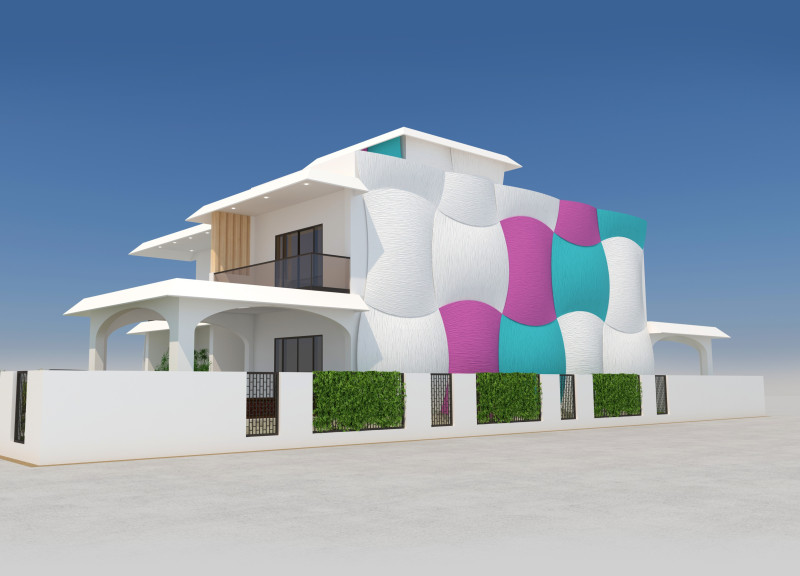5 key facts about this project
At its core, the project represents a commitment to sustainability and contextual relevance, reflecting a deep understanding of the local environment and community dynamics. The design enables an interaction with the landscape, incorporating elements that encourage both engagement and contemplation. This project is ideally suited for its intended use, which may encompass residential, commercial, or cultural functions, prioritizing human experience and accessibility.
One of the key aspects of the architectural design is its materiality. A careful selection of materials enhances the project’s performance, longevity, and aesthetic integrity. The use of materials such as reinforced concrete, timber, glass, and metal harmoniously combines tradition with modern techniques. Reinforced concrete provides durability and structural strength, while the warm tones of timber introduce a sense of coziness and connection to nature. Large expanses of glass not only facilitate natural lighting but also establish a visual connection to the exterior, effectively blurring the boundaries between indoor and outdoor spaces. Metal accents are judiciously employed to add a contemporary edge and a sense of fluidity throughout the structure.
The design outcomes emerge from a thoughtful dialogue between the built environment and the surrounding landscape. Unique design approaches have been invoked, particularly in how the building interacts with climatic conditions. Overhangs and shading devices are strategically implemented to regulate sunlight and heat gain, ensuring a comfortable indoor environment while reducing energy consumption. Moreover, the orientation of the building has been meticulously planned to maximize passive solar heating in the winter while minimizing it during the summer months.
The architectural layout promotes flexibility and adaptability, featuring open-concept spaces that are capable of evolving with the needs of its users. Thoughtfully placed partitions allow for privacy without sacrificing the overall sense of spaciousness. This approach not only enhances the user experience but also aligns with the modern trend towards multifunctional spaces in architectural design.
Furthermore, the project incorporates sustainable design features, such as rainwater harvesting systems, green roofs, and energy-efficient HVAC systems. These elements contribute significantly to reducing the environmental footprint of the building. The integration of landscape design elements—like native plant species and outdoor gathering areas—further enhances the ecological performance of the site while promoting community interaction.
Details throughout the project exemplify a careful attention to craftsmanship and stylistic coherence. From the entrance sequence to the choice of finishes, each element has been designed to complement the overall narrative of the building. The careful mixing of textures and colors not only defines the character of the spaces but also contributes to an engaging sensory experience.
In summary, this architectural project demonstrates an effective synthesis of innovative design ideas, advanced technology, and sustainable practices. The unique approach to materiality, spatial organization, and environmental responsiveness sets this project apart. It invites further exploration of its architectural plans, sections, and designs, encouraging viewers to engage more deeply with the thoughtful concepts and intentions underlying the architecture. Readers interested in gaining a comprehensive understanding of this project are encouraged to delve into its detailed presentations and embrace the architectural ideas that bring this vision to life.


 Azam Shahul Hameed Ameer Sulthan Ameer Sulthan
Azam Shahul Hameed Ameer Sulthan Ameer Sulthan 























